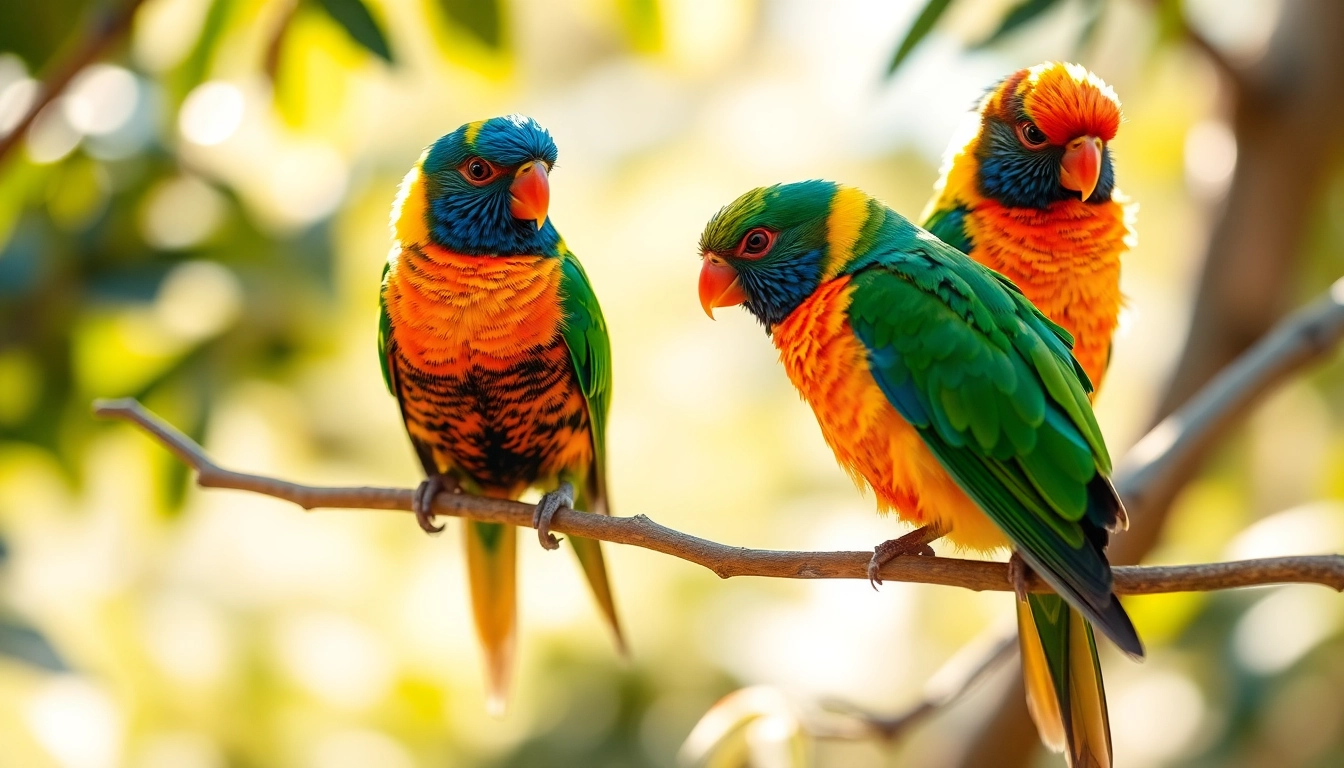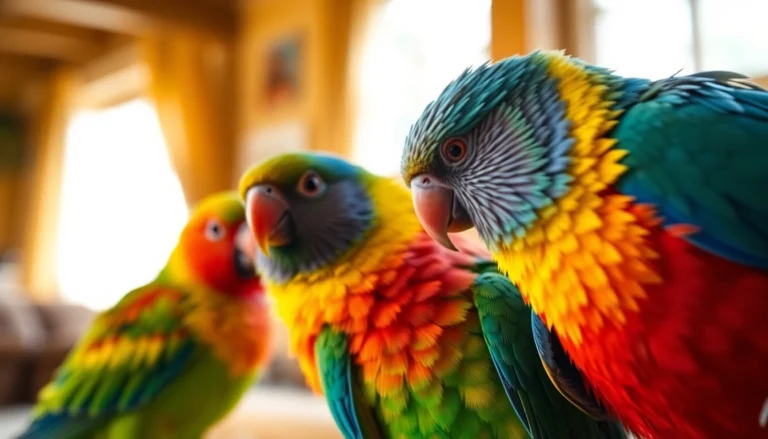Introduction to Pet Birds and Their Popularity
Pet birds have captivated human hearts for centuries, offering both companionship and vibrant beauty to homes around the world. Their diverse species, intelligent behaviors, and unique communication styles make them fascinating pets for a wide range of bird enthusiasts. These avian companions can bring joy, color, and lively interaction into a household, making them a popular choice for pet owners seeking a dynamic and interactive pet experience. Whether it’s the cheerful chirping of a canary or the intelligent mimicry of a African grey parrot, pet birds provide a special bond rooted in their remarkable behaviors and personalities.
Many people opt for pet birds because of their relatively manageable size, the variety of species available, and the intriguing way they communicate and express themselves. Unlike some pets that require extensive space or constant physical interaction, birds can thrive in well-designed environments that stimulate their mental and physical health. As with any pet, understanding their natural behaviors, needs, and habitats is essential to ensure they lead healthy, fulfilling lives. To get started, prospective owners should explore common bird species kept as pets and learn about their behavioral traits, communication methods, and care requirements.
Reasons People Choose Pet Birds as Companions
People select pet birds for numerous compelling reasons. One of the primary advantages is their relatively low maintenance compared to larger mammals. Many bird species are highly adaptable and can thrive in confined spaces like cages or aviaries, making them ideal for apartment living or busy households. Additionally, their captivating vocalizations and ability to mimic sounds or speech create an engaging interaction that can be both entertaining and emotionally rewarding.
Furthermore, pet birds often exhibit strong social and emotional bonds with their owners. They can be playful, affectionate, and intelligent, capable of learning tricks and responding to their environment in ways reminiscent of more traditional companion animals. For bird enthusiasts, the fascination with their feathers, behaviors, and communication strategies fuels a lifelong passion for avian care.
Another critical reason is the educational aspect. Keeping pet birds can foster a deeper understanding of avian biology and ecology, promoting conservation awareness and appreciation of natural habitats. As you explore pet birds, you’ll discover a rich community sharing tips, experiences, and insights that enhance the ownership experience.
Common Bird Species Kept as Pets
Several bird species have gained popularity in the pet trade due to their manageable size, temperament, and intelligence. Some of the most common include:
- Budgerigars (Budgies): Small, colorful, and highly trainable, budgies are among the most popular pet birds worldwide. They thrive with social interaction and can learn to mimic words and sounds.
- Canaries: Known for their melodious singing, canaries are ideal for owners who appreciate vocalization. They generally prefer solitude or minimal handling but are charming display birds.
- Lovebirds: Small parrots that form strong pair bonds, lovebirds are affectionate and require social interaction. Their lively nature makes them engaging companions.
- African Grey Parrots: Renowned for their exceptional mimicking ability and high intelligence, these parrots require mental stimulation and social engagement to prevent boredom.
- Cockatiels: Friendly and approachable, cockatiels are known for their crest and sweet whistles. They adapt well to indoor environments and enjoy interaction.
Each species has specific needs and temperaments, making comprehensive research essential before selecting your ideal pet bird. Recognizing their natural behaviors helps foster positive interactions and ensures their well-being.
Understanding Bird Behavior and Communication
Birds are inherently expressive creatures with complex communication systems. Their behaviors and vocalizations serve purposes such as signaling threat, expressing affection, or establishing social hierarchies. Understanding these signals is crucial for responsible pet ownership.
For example, a relaxed bird may gently preen itself or chirp softly, whereas a bird exhibiting signs of stress might fluff up its feathers, avoid eye contact, or display aggressive postures. Vocalizations vary across species—some are silent or minimal, while others sing or mimic sounds with remarkable accuracy. Recognizing these cues helps owners respond appropriately, fostering trust and reducing stress.
By paying attention to body language and vocal patterns, owners can better interpret their bird’s needs and emotions. Engaging in regular interaction and positive reinforcement encourages desirable behaviors and strengthens the human-bird bond.
Setting Up the Perfect Habitat for Pet Birds
Choosing the Right Cage and Accessories
The foundation of a healthy pet bird environment starts with selecting an appropriate cage. It should be spacious enough to allow free movement, stretching, and flight. A good rule of thumb is to choose a cage that provides at least 1.5 to 2 times the wingspan of your bird in all directions.
In addition to size, the cage should have sturdy bars spaced correctly to prevent escapes or injuries. Accessories such as perches of varying diameters help maintain foot health, while toys stimulate mental activity and reduce boredom. Swings, ladders, and other enrichment items are essential for encouraging natural behaviors like climbing and foraging.
Optimal Lighting and Temperature Conditions
Birds require a balanced environment with appropriate lighting and temperature to thrive. Natural light is ideal, but if indoors, use full-spectrum or full-spectrum LED lights to simulate natural daylight cycles. Darkness is equally important for rest; provide a dark, quiet sleeping area at night.
Temperature control is vital—most pet birds prefer a stable room temperature between 65°F and 80°F (18°C to 27°C). Avoid drafts, direct sunlight, or proximity to heating/cooling vents that cause fluctuations. Maintaining consistent conditions supports their immune health and overall vitality.
Creating a Safe and Enriching Environment
Safety is paramount. Remove toxic plants, fumes, or chemicals from the vicinity, and ensure the cage is secure from predators or household hazards. Cover cage openings that could trap a bird’s head, and inspect that perches and toys are free from sharp edges or small parts that could be ingested.
For enrichment, incorporate natural elements like branches, leafy greens, and puzzle toys. Rotate toys regularly to keep the environment stimulating. Providing opportunities for foraging and problem-solving keeps your pet bird engaged and prevents behavioral issues caused by boredom.
Feeding and Nutrition for Pet Birds
Essential Dietary Components and Supplements
Proper nutrition is critical to a pet bird’s health. Their diet should be balanced with high-quality commercial pellets, fresh fruits, vegetables, and occasional seeds or nuts. Pellets are formulated to deliver essential vitamins and minerals, while fresh foods provide variety and enrichment.
Supplements like calcium sources (e.g., cuttlebone) and vitamin powders may be necessary to address deficiencies, especially in breeding or growing birds. Consult with an avian veterinarian to tailor dietary plans according to species-specific needs.
Tips for Fresh and Appropriate Bird Food
Always choose fresh, pesticide-free produce and avoid toxic foods such as chocolate, avocado, caffeine, or onion. Wash all fruits and vegetables thoroughly, and cut into manageable pieces. Incorporate a diverse range of foods to ensure a broad spectrum of nutrients.
Introducing new foods gradually and observing for adverse reactions helps prevent dietary aversions or health issues. Providing a variety of textures and flavors encourages natural foraging behaviors and stimulates appetite.
Signs of Nutritional Deficiencies and How to Prevent Them
Indicators of poor nutrition include feather loss, dull plumage, lethargy, and abnormal droppings. Vitamin A deficiency might cause respiratory issues, while calcium deficiency can lead to weak eggshells or rickets.
Prevention involves offering a varied diet, supplementing with appropriate mineral blocks or powders, and regular veterinary check-ups. Monitoring your bird’s health and behavior is essential for early detection and intervention.
Health Care and Common Bird Diseases
Maintaining Bird Hygiene and Preventing Illness
Good hygiene practices include weekly cage cleaning, fresh water daily, and regular bathing or misting to keep feathers clean. Avoid exposure to contaminated surfaces or airborne toxins like tobacco smoke or strong cleaning agents.
Recognizing Symptoms of Illness in Pet Birds
Early signs of illness include fluffed feathers, change in vocalization, diarrhea, nasal discharge, or decreased activity. If any of these symptoms are observed, consult an avian veterinarian promptly, as early intervention is key to successful treatment.
When and How to Consult Avian Veterinarians
Routine health checks should be scheduled annually or as recommended. Find a veterinarian specializing in avian medicine for comprehensive exams or urgent issues. Maintain a record of your bird’s health history and any treatments to assist in ongoing care.
Training, Socialization, and Enrichment for Pet Birds
Basic Training Techniques for Birds
Positive reinforcement is the most effective training method. Use treats, praise, and patience to teach your bird tricks, target training, or acceptable behaviors. Consistency and gentle handling foster trust and understanding.
Socializing Your Pet Bird for Better Behavior
Spend quality time interacting with your bird daily. Allow supervised out-of-cage playtime and introduce new people gradually. Socialization reduces fear and aggression, leading to more relaxed and friendly behaviors.
Enrichment Activities to Prevent Boredom
Engage your bird with foraging toys, puzzle feeders, and environmental changes like new perches or safe outdoor flights. Rotating toys and introducing new stimuli keep their minds active and prevent behavioral issues related to boredom.



















